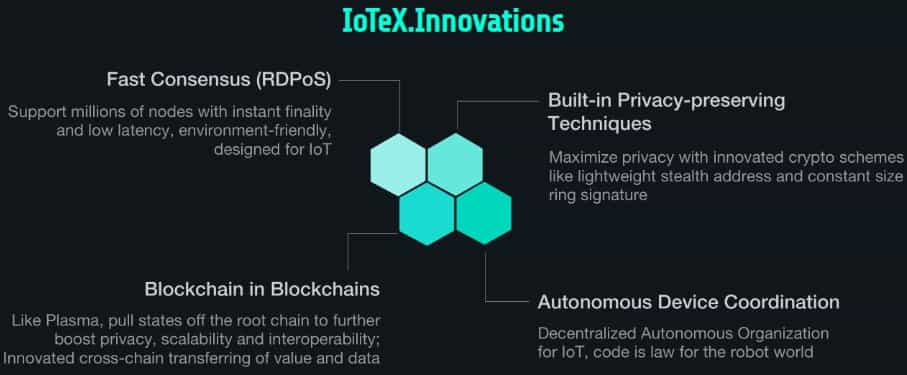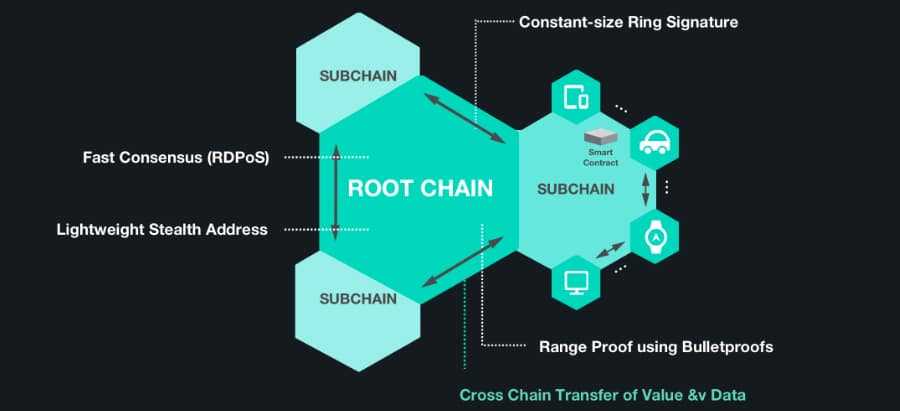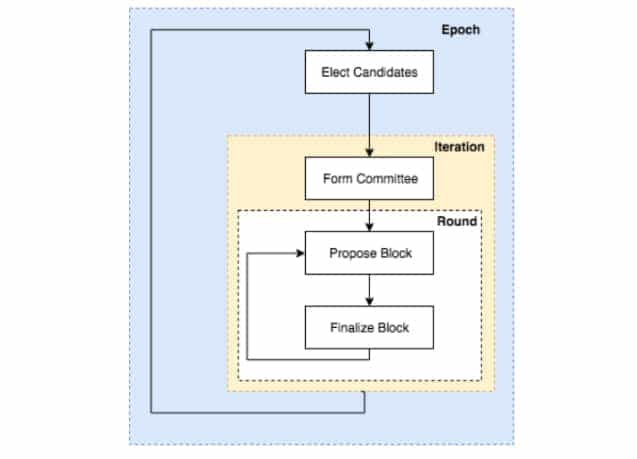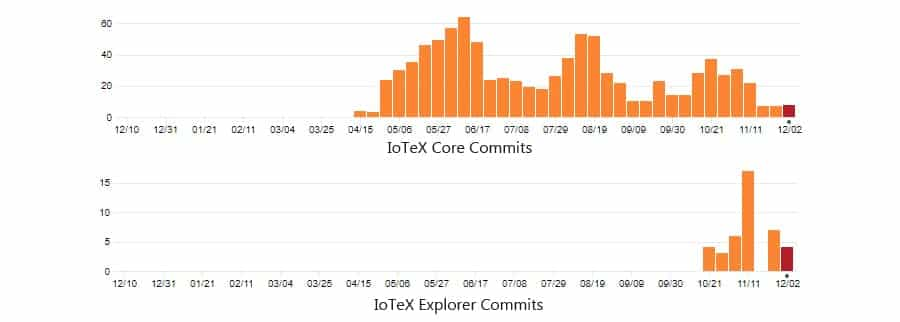Review of IoTeX (IOTX): Privacy Conscious Blockchain for IoT
IoTeX (IOTX) is the private “blockchain-within-a-blockchain” scalable solution for powering the Internet of Things (IoT).
It is designed to connect the physical world of internet devices block by block, and will be both fast and scalable thanks to the unique Roll-DPoS consensus mechanism. IoTeX also brings to bear a lightweight technique for preserving privacy.
However, given the extensive list of privacy coins and IoT solutions, can they really differentiate themselves?
In this review of IoTeX, we will give you a complete overview of the project. We will dig into the technology, team members and use cases. We will also take a look at the development roadmap and cases for broader adoption of the IOTX token.
The IoTeX Idea
The number of IoT devices is expected to exceed 50 billion by 2022 according to research conducted by Juniper Research. That's a huge number, and this immense number of internet connected devices will also need secure methods of communication and automation in real-time.
There are several problems that have prevented the mass adoption of IoT technology thus far. These include:
- Scalability;
- Lack of Privacy;
- High Operating Costs;
- Lack of Functional Value.
IoTeX plans on solving these problems with a privacy-centric blockchain which provides flexibility and scalability by leveraging a fast consensus mechanism that is based on Proof-of-Stake, combined with the use of sidechains.

IoTeX isn't without competition. One of its largest competitors is IOTA, which is using Directed Acyclic Graph (DAG) technology to solve scalability issues and provide a lightweight platform for devices with low power requirements.
IOTA's use of DAG technology comes at a price though, and that price is global consensus. The IoTeX developers think this price is too high and are looking to design a blockchain solution to get beyond scalability issues. Their vision includes a blockchain that is made of many blockchains. There will be a root blockchain responsible for the security and governance of the network, and then sidechains that carry out specific functions.
IoTeX Technology
In terms of architecture, IoTeX is aiming to become like the spinal cord and nervous system of for IoT systems. This architecture includes the following design features:
Separation of Duties
When dealing with IoT there are many different features needed in a blockchain, because different applications have different needs. This makes it impractical to put IoT nodes all into a single blockchain. Plus it would cause the blockchain to bloat, making computations slow and heavy.
So, IoTeX is working with the idea of a separation of duties. This means sidechains will be created for each needed function, and these sidechains will be able to interact with each other when necessary. By creating sidechains the team believes they can maximize the efficiency of the blockchain and its privacy.
Built-in Privacy
IoTeX has included several mechanisms to ensure the privacy of users and transactions is preserved. One way it does this is through the use of ring signatures. It adds to this with a relayable payment code to hide the address of the transaction receiver.

And this is all built upon a lightweight address system that doesn’t require receiving addresses to scan the entire network to become aware of incoming transactions.
Occam's Razor
Occam's razor is a principle which says the simplest solution is usually the correct solution. When you apply this to IoT it means different devices have different needs and IoTeX addresses this in the simplest way possible, by giving each device just what it needs though separate sidechains. One example for this is where transactions need to be relayed. These blockchains don't require Turing-complete contracts and can be far simpler.
IoT-Friendly
IoT blockchain solutions need to be lightweight and minimize energy usage as well as storage and computational needs. One unique design feature of IoTeX is that its blockchains can run alongside each other and retain interoperability. This is done through the use of a root blockchain combined with sidechains.
Root Blockchain and Sidechains
The architecture of IoTeX consists of a root blockchain that provides security and governance for the network, while also managing the subchains. Those subchains are used to connect IoT devices that work in similar environments, have similar trust levels, or have a similar functional purpose.

This comes with several benefits, one of which is that if any subchain is attacked the root chain remains unaffected. With the IoTeX blockchain this architecture is also called a “blockchain-within-a-blockchain.”
Cross-Blockchain Communication
With the IoTeX protocol communication across blockchains is fast, efficient and inexpensive. The developers have included block finality in the solution, which guarantees any new block created cannot be changed.
It also includes pegging, which is a method for using sidechains to scale the Bitcoin network. Public blockchains typically do not include instant block finality, but the IoTeX consensus mechanism is able to achieve instant finality.
IoTeX Roll-DPoS Consensus
Delegated Proof-of-Stake works by having stakeholders vote for the block producers of the network. This is a set number of block producers, and once they are elected they remain responsible for adding new blocks to the blockchain.
They receive rewards for doing so, which they distribute to the stakeholders who voted for them. This process incentivizes the block producers to continue producing blocks, and incentivizes stakeholders to vote for block producers.
The DPoS consensus mechanism isn’t without flaws. First and foremost is the set static number of block producers means the network never achieves decentralization. Seconds, and important for an IoT blockchain like IoTeX, is that it cannot handle complex blockchain architectures, or multiple large scale applications running simultaneously.

IoTeX is planning to solve these problems with their Randomized Delegated Proof of Stake (Roll-DPoS) algorithm. This combines DPoS with Verifiable Random Functions (VRF) and Practical Byzantine Fault Tolerance (PBFT). By including all three elements the Roll-DPoS consensus can achieve mass scale and improved decentralization.
The IoTeX Team
The team behind IoTeX is extremely experienced in cryptography and cryptocurrencies. Raullen Chai is a co-founder of the project, and along with being a research scientists at the University of Waterloo he also holds a PhD in cryptography. Previously he worked at Uber as the head of cryptography research and development, and prior to that he was a security engineer at Google.
Qevan Guo is another co-founder of IoTeX and he holds a PhD in machine learning and computer vision from the National University of Singapore. Prior to his work on IoTeX he was a research scientist and engineering manager at Facebook.

The third co-founder of IoTeX is Jing Sun, who has led more than 40 investments in security, blockchain and IoT. She brings the business experience to the project, having previously been a founding partner of Sparkland Capital, a venture capital firm that connected Asia with Silicon Valley.
She has already been able to secure several strategic partnerships, such as one with the Blockchain Foundation, and another with Jinse, a blockchain industry service platform. Another key partnership was announced this past June with smart contract security and verification firm CertiK. They will help ensure that the IoTeX blockchain and smart contracts are totally secure.
IOTX Tokens
The IOTX token is an ERC-20 token that will be swapped to a native token (scheduled for Q1 2019). Once swapped the native token will take the ticker symbol IOTX and will be mineable for the next 50 years. There are currently 1,331,040,005 IOTX in circulation, and there is a total capped supply of 10 billion tokens.
The alpha mainnet is scheduled to go live in the first quarter of 2019. At that time a token swap will occur for the native token and the tokens will then be used to power the IoTeX network, including fueling distributed apps and powering transactions.
IoTeX held an ICO in February 2018, but it was a private sale only. They raised a little over $14 million at an ICO price of $0.007.

IOTX reached a high just above $0.068 on June 1, 2018 in response to being listed on Binance. Since then the price has been trading steadily lower due to the broad based bear market in cryptocurrencies. As of December 7, 2018 each IOTX is worth $0.007177.
The largest trading volume in the IOTX token is on Binance, with much smaller amounts being traded on Kucoin and Gate.io. There’s also a small amount being traded on Bilaxy.
As an ERC-20 token IOTX can be stored in any ERC-20 compatible wallet, however once it is swapped for the native IOX token the native IoTeX wallet will need to be used. There is a beta version of the wallet available from iotexscan.io/wallet.
Development & Roadmap
One of the best ways to get a sense of how much work is being done by the project is to take a look at their GitHub activity. This will give you an immediate metric of the code being pushed on a weekly / monthly basis. Taking a look at the IoTeX Github repository they still seem to be quite active.

If we were to take a look at the frequency of the IoTeX commits compared to other projects, they are ranked number 90 (updated till October). This places them between the commits of the privacy centric Zcash (ZEC) at 89 and the Trinity Network at 91.
Looking at the IoTeX roadmap we can see that the next big step to reach is the launch of their Mainnet alpha launch in Q1 of 2019. Not long after that in Q2 2019 they are expected to release their IoT DApps which will allow for integration with smart devices. If all goes to plan we could expect to see the Beta in Q3 and then the Mainnet GA in Q4.
In terms of general communication, the IoTeX team seems to be quite engaged with their community. For example, they were recently awarded a Gold Label status by Binance Info. According to Binance:
Gold Label Project is to help ensure users obtain timely updates on crypto projects, as well as trustworthy, accurate, and comprehensive information
Indeed, this appears to be the case because if you head over to the official IoTeX blog you can see the regularity with which they post updates. They do this in both English and Korean given the geographic locations of the bulk of their community.
Conclusion
IoTeX is an ambitious project that could have a huge impact on business and industry as it can be used with tens of billions of IoT devices in the future. The team is extremely intelligent, with several PhDs working to realize the IoTeX vision.
A preview of the mainnet was launched on November 15, 2018 and the alpha mainnet for the project is planned to launch in the first quarter of 2019, and that will give a better idea of how advanced the project is, and how much demand they’ve generated. The testnet is already working with smart contracts, a wallet and a blockchain explorer. The team has been good about meeting deadlines with a solid product.
Investors are likely disheartened by the lack of gains from the ICO price, but that is almost completely down to the bear market in cryptocurencies. This will pass, and the IOTX (or IOX) token has the potential to make massive gains very rapidly, especially if a working product has been launched.
With IOTA as competition the IoTeX team will no doubt be challenged along the way, but they believe they have the best solution for IoT applications and are working hard to prove it.
Disclaimer: These are the writer's opinions and should not be considered investment advice. Readers should do their own research.
Disclaimer: These are the writer’s opinions and should not be considered investment advice. Readers should do their own research.
